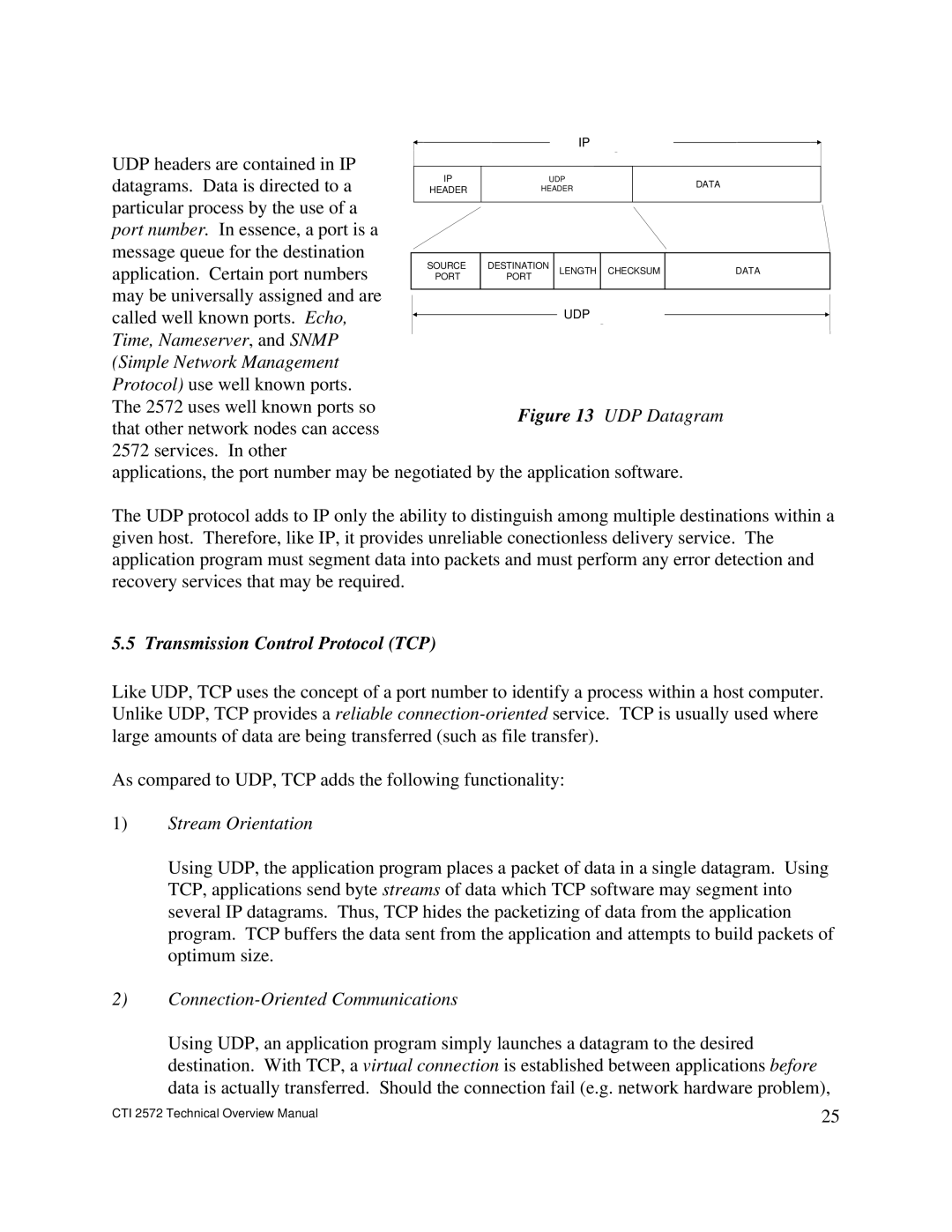
UDP headers are contained in IP |
|
|
|
|
|
|
|
|
|
| |
IP |
| UDP |
|
|
|
|
| ||||
datagrams. Data is directed to a |
|
|
|
| DATA |
| |||||
HEADER |
| HEADER |
|
|
|
| |||||
|
|
|
|
|
| ||||||
particular process by the use of a |
|
|
|
|
|
|
|
|
|
| |
|
|
|
|
|
|
|
|
|
| ||
port number. In essence, a port is a |
|
|
|
|
|
|
|
|
|
| |
message queue for the destination |
|
|
|
|
|
|
|
|
|
|
|
| SOURCE | DESTINATION |
|
|
|
|
|
|
| ||
application. Certain port numbers |
|
| LENGTH | CHECKSUM | DATA |
| |||||
| PORT | PORT |
|
|
| ||||||
|
|
|
|
|
|
|
|
| |||
may be universally assigned and are |
|
|
|
|
|
|
|
|
|
|
|
|
|
|
|
|
|
|
|
|
|
| |
called well known ports. Echo, |
|
|
|
|
| UDP |
|
| |||
|
|
|
|
|
|
| |||||
Time, Nameserver, and SNMP |
| |
(Simple Network Management |
| |
Protocol) use well known ports. |
| |
The 2572 uses well known ports so | Figure 13 UDP Datagram | |
that other network nodes can access | ||
| ||
2572 services. In other |
| |
applications, the port number may be negotiated by the application software. | ||
The UDP protocol adds to IP only the ability to distinguish among multiple destinations within a given host. Therefore, like IP, it provides unreliable conectionless delivery service. The application program must segment data into packets and must perform any error detection and recovery services that may be required.
5.5 Transmission Control Protocol (TCP)
Like UDP, TCP uses the concept of a port number to identify a process within a host computer. Unlike UDP, TCP provides a reliable
As compared to UDP, TCP adds the following functionality:
1)Stream Orientation
Using UDP, the application program places a packet of data in a single datagram. Using TCP, applications send byte streams of data which TCP software may segment into several IP datagrams. Thus, TCP hides the packetizing of data from the application program. TCP buffers the data sent from the application and attempts to build packets of optimum size.
2)Connection-Oriented Communications
Using UDP, an application program simply launches a datagram to the desired destination. With TCP, a virtual connection is established between applications before data is actually transferred. Should the connection fail (e.g. network hardware problem),
CTI 2572 Technical Overview Manual | 25 |
